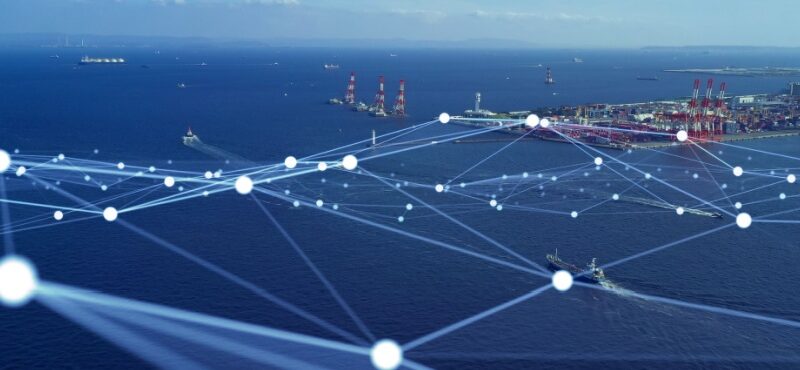Effective Marine Navigation & Communication is the backbone of safe, efficient, and reliable maritime operations. For vessels operating far from shore, reliable communication systems are as essential as navigational tools. These systems ensure that crew members, ship owners, and shore-based teams maintain constant contact, make informed decisions, and respond to emergencies promptly.
Atlas Technologies Corporation delivers innovative solutions designed to enhance Marine Navigation & Communication, integrating advanced satellite systems, radio technologies, and safety protocols to meet the demands of modern shipping.
The Importance of Marine Navigation & Communication
Maritime operations face unique challenges that make Marine Navigation & Communication critical. Ships operate in isolated environments where delays or miscommunication can have severe consequences. Navigation systems keep vessels on course, while communication systems ensure timely information exchange. Together, they safeguard crew wellbeing, protect cargo, and maintain efficiency.
Good communication at sea is not only about operational needs. Crew welfare depends on connectivity. Internet access allows crew members to connect with family, access important weather updates, receive navigation charts, report positions, and even access telemedicine services. This connectivity improves morale and reduces fatigue, which is crucial for maintaining operational performance.
Effective Marine Navigation & Communication also plays a vital role in safety. Ships must communicate with other vessels and shore-based authorities to exchange maritime safety information, navigate hazards, and transmit distress signals in emergencies. Modern systems like the Global Maritime Distress and Safety System (GMDSS) have revolutionised how this communication happens.
Modern Marine Communication Systems
Modern Marine Navigation & Communication systems use a blend of satellite, radio, and automated technologies to maintain reliable communication channels anywhere in the world. These systems support ship-to-ship, ship-to-shore, and shore-to-ship communication, ensuring a seamless flow of information.
Satellite communication is at the heart of modern maritime communications. INMARSAT, a widely used satellite system, offers voice, telex, and data transfer services for ships operating in remote regions. It enables crew members to make phone calls, send emails, and access critical navigation data regardless of their location.
Radio systems, including VHF and MF/HF radios, remain vital for direct ship-to-ship communication and coastal monitoring. NAVTEX, an internationally adopted system, automatically delivers maritime safety information, such as navigational warnings, weather forecasts, and search and rescue notices.
Reliable communication systems also integrate with vessel tracking and fleet management platforms, allowing ship owners and operators to monitor fleet performance, maintain schedules, and respond quickly to operational changes.
Understanding GMDSS (Global Maritime Distress and Safety System)
The era of maritime Morse code has passed. GMDSS is now the standard for Marine Navigation & Communication, providing automated distress alerts and ensuring rapid response in emergencies. GMDSS uses a combination of land-based and satellite systems to alert shore-based rescue authorities and nearby vessels when a ship is in distress.
Under international regulations, all ocean-going passenger ships and cargo ships of 300 gross tons or more must be equipped with GMDSS-compliant radio systems. These systems include five key components that work together to provide reliable communication and safety coverage.
1. INMARSAT
A satellite-operated communication network that provides ship-to-ship, ship-to-shore, and shore-to-ship communication. INMARSAT enables voice calls, email, and data transfer anywhere at sea, ensuring that vessels remain connected regardless of location.
2. NAVTEX
NAVTEX delivers automated maritime safety information, including weather warnings, navigational alerts, and search and rescue notices. This system operates without human intervention, ensuring that critical information reaches ships without delay.
3. Search and Rescue Locating Equipment
This equipment allows rescue authorities to pinpoint the exact location of a vessel in distress. It transmits location data that enables rapid deployment of search and rescue operations.
4. Digital Selective Calling (DSC)
DSC allows vessels to send distress alerts or safety messages directly to other ships or shore stations. This system improves communication efficiency and reduces response times in emergencies.
5. Emergency Position Indicating Radio Beacon (EPIRB)
EPIRBs transmit location data to rescue coordination centres during emergencies, ensuring that survivors can be located quickly and accurately.
Together, these components form a robust safety and communication network essential for modern Marine Navigation & Communication.
Emerging Trends in Marine Navigation & Communication
Technology continues to evolve, and the future of Marine Navigation & Communication is being shaped by AI, IoT, and advanced data analytics. These innovations offer new levels of efficiency, safety, and situational awareness.
Artificial Intelligence is being integrated into navigation systems to predict optimal routes, detect hazards, and improve fuel efficiency. AI-driven analytics can also process real-time data from sensors, enabling more accurate decision-making at sea.
The Internet of Things (IoT) is transforming marine communication by connecting navigation instruments, safety systems, and vessel monitoring platforms. IoT integration allows crews and operators to access critical data from anywhere, improving operational efficiency and safety.
Cybersecurity is also gaining prominence in Marine Navigation & Communication. As vessels increasingly rely on connected systems, protecting communication channels and navigation data from cyber threats has become essential.
Vessel tracking systems and fleet management platforms continue to advance, offering features like real-time monitoring, predictive maintenance alerts, and performance analytics. These innovations allow operators to optimise operations, reduce downtime, and improve safety.
Atlas Technologies Corporation’s Role in Marine Communication Solutions
Atlas Technologies Corporation is at the forefront of enhancing Marine Navigation & Communication. With a strong focus on innovation, Atlas delivers solutions that combine reliability, safety, and efficiency.
Atlas offers a suite of marine communication systems designed to meet international safety standards, including GMDSS-compliant solutions. These systems integrate satellite communications, NAVTEX services, DSC, and EPIRB functionality to ensure vessels remain connected and safe anywhere in the world.
Atlas’ marine solutions also include advanced navigation systems that integrate seamlessly with communication platforms. This integration improves situational awareness, streamlines operations, and enhances crew safety.
By combining cutting-edge technology with expert support, Atlas Technologies ensures that shipping companies can rely on robust Marine Navigation & Communication systems that deliver safety, compliance, and operational excellence.
Takeaway
Advanced Marine Navigation & Communication systems are indispensable to modern maritime operations. They ensure that vessels remain connected to each other and shore-based authorities, improve crew safety and wellbeing, and streamline operations.
Atlas Technologies Corporation continues to lead the way, offering innovative solutions that meet the growing demands of the maritime industry. By integrating satellite communication, automated safety systems, and advanced navigation tools, Atlas delivers reliable and future-ready maritime communication solutions.
Frequently Asked Questions (FAQ)
What is Marine Navigation & Communication?
Marine Navigation & Communication refers to the systems and technologies used to navigate vessels and maintain communication between ships, shore stations, and other vessels. These systems include satellite communication, NAVTEX, GMDSS, and vessel tracking platforms.
Why is GMDSS important?
GMDSS provides automated distress alerts and ensures rapid communication between ships and rescue coordination centres, improving safety during maritime emergencies.
How does NAVTEX work?
NAVTEX automatically delivers navigational warnings, weather forecasts, and safety information to vessels, ensuring crews receive critical updates without manual input.
What role does Atlas Technologies play in Marine Navigation & Communication?
Atlas Technologies provides advanced communication and navigation solutions that integrate satellite systems, safety protocols, and vessel monitoring tools to improve maritime safety and operational efficiency.
How will technology shape the future of Marine Navigation & Communication?
Emerging technologies such as AI, IoT, and enhanced cybersecurity will transform maritime communication, enabling smarter navigation, better safety, and improved operational efficiency.








